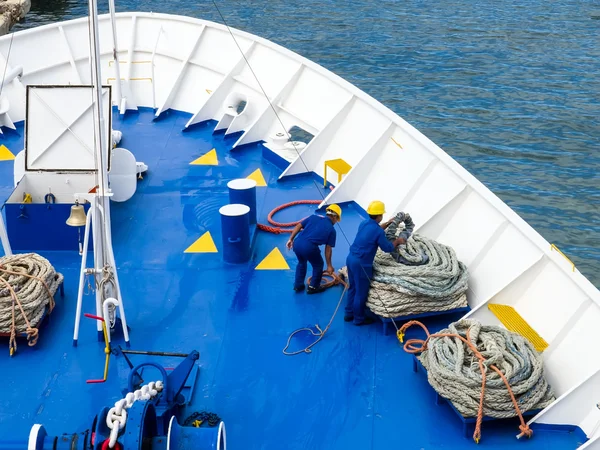Despite attempts to prove that the crew member of a fishing vessel was responsible for his own injuries because he had been standing in a dangerous area, the team at Latti Associates prevailed in negotiations. It succeeded in obtaining a settlement of $1,751,450. The crew member suffered permanent injuries to his foot due to an accident at the stern of a fishing vessel.
It is not always clear which parties have been negligent in an accident case, so it is crucial to act quickly and investigate thoroughly to gain the evidence necessary to prove why you are entitled to recover compensation after an accident. In this case, we were able to leverage evidence and legal arguments to gain substantial compensation for an accident victim in a case where liability was necessarily clear-cut.
How the Injury Occurred
In this case, the crew member had over 30 years of experience working on fishing vessels. At the time of the accident, he was helping another crew member release a wire caught on the stern ramp door of the vessel, preventing the door from closing properly. The door was a solid piece of steel weighing between 400 and 500 pounds. While the crew member was maneuvering the door to remove the wire, a wave crashed against the ramp and knocked the door down onto the crew member’s foot, resulting in crush injuries.
He endured multiple surgeries over the next four and half years, including bone grafts, fusions, nerve decompression, and reconstruction efforts. He suffered infections that required additional surgeries. In the end, he was left with permanent pain, nerve damage, numbness, and limited mobility in his foot. He will not be able to work on a fishing vessel again.
Legal Arguments in this Case
Our team argued that the owner of the vessel acted negligently and also operated a vessel that did not meet the appropriate standards for seaworthiness. For someone to be liable for negligence, you need to show that they failed to use reasonable care under the circumstances. In this case, we argued that proper procedures for raising the door weren’t followed, and if they had been, the door would not have been caught, and the injury never would have occurred. We argued that the vessel was unseaworthy due to the design of the stern ramp door and the failure to have proper safety mechanisms.
As noted above, the other side argued that the crew member should be held liable for the injuries because of his own conduct. They alleged that he had been warned not to stand in the area where he was at the time of the accident. But our arguments prevailed, and we obtained the compensation our client was entitled to.
We Know How to Work Effectively to Get Injured Crew Members the Compensation They Deserve
Injuries that occur at sea are handled differently than injuries that occur on land, such as standard car accident cases. At Latti Associates, we have decades of experience focused on the specific rules that apply to injured mariners, and we know the proper steps to take to secure advantageous settlements and verdicts for our clients.
Vessel owners and insurance companies can often make it very difficult to obtain fair compensation after an injury on the water, so it is a good idea to consult our team as soon as possible after an accident. You can schedule a free consultation and case evaluation online or over the phone at (617) 523-1000.


